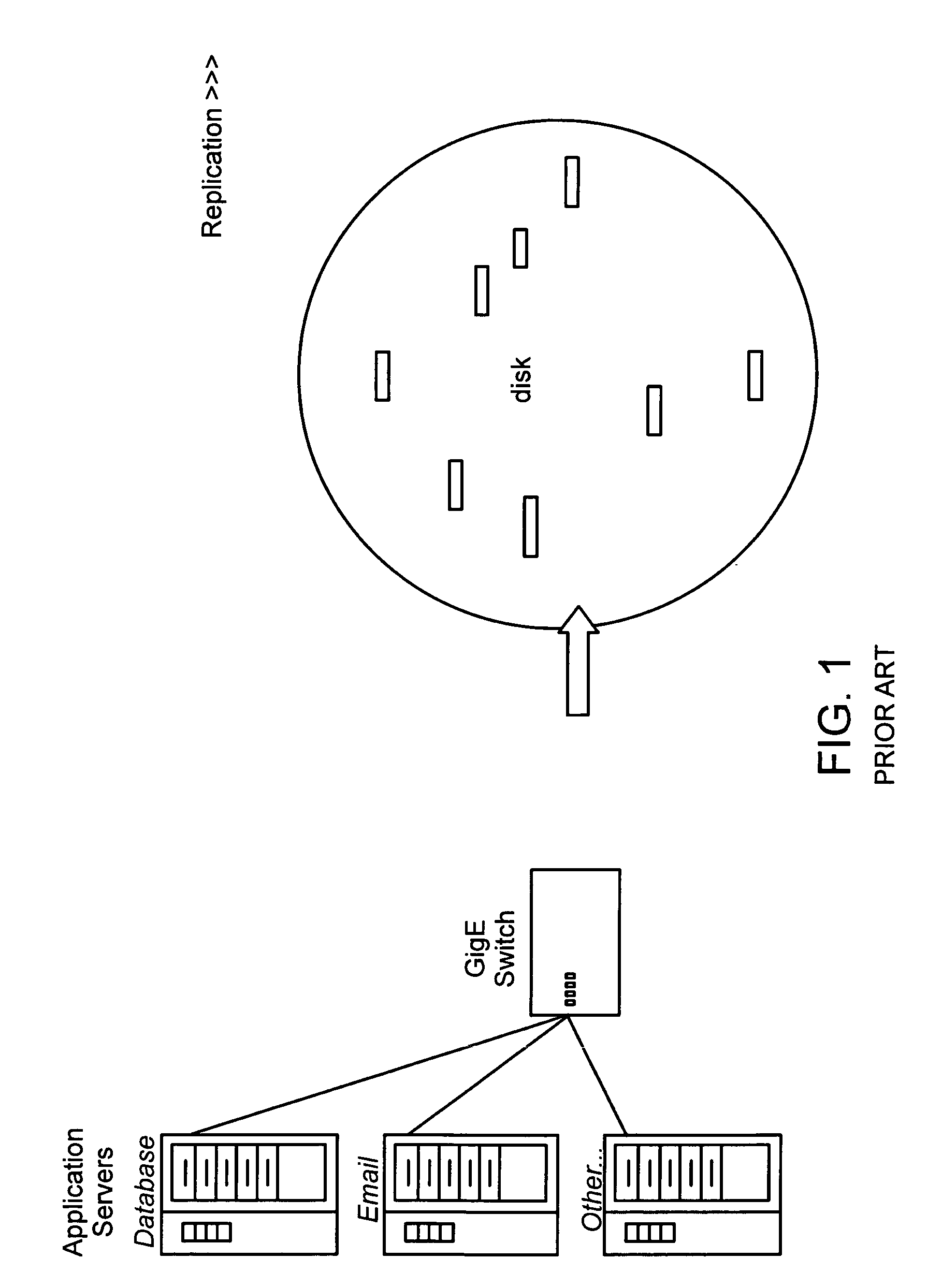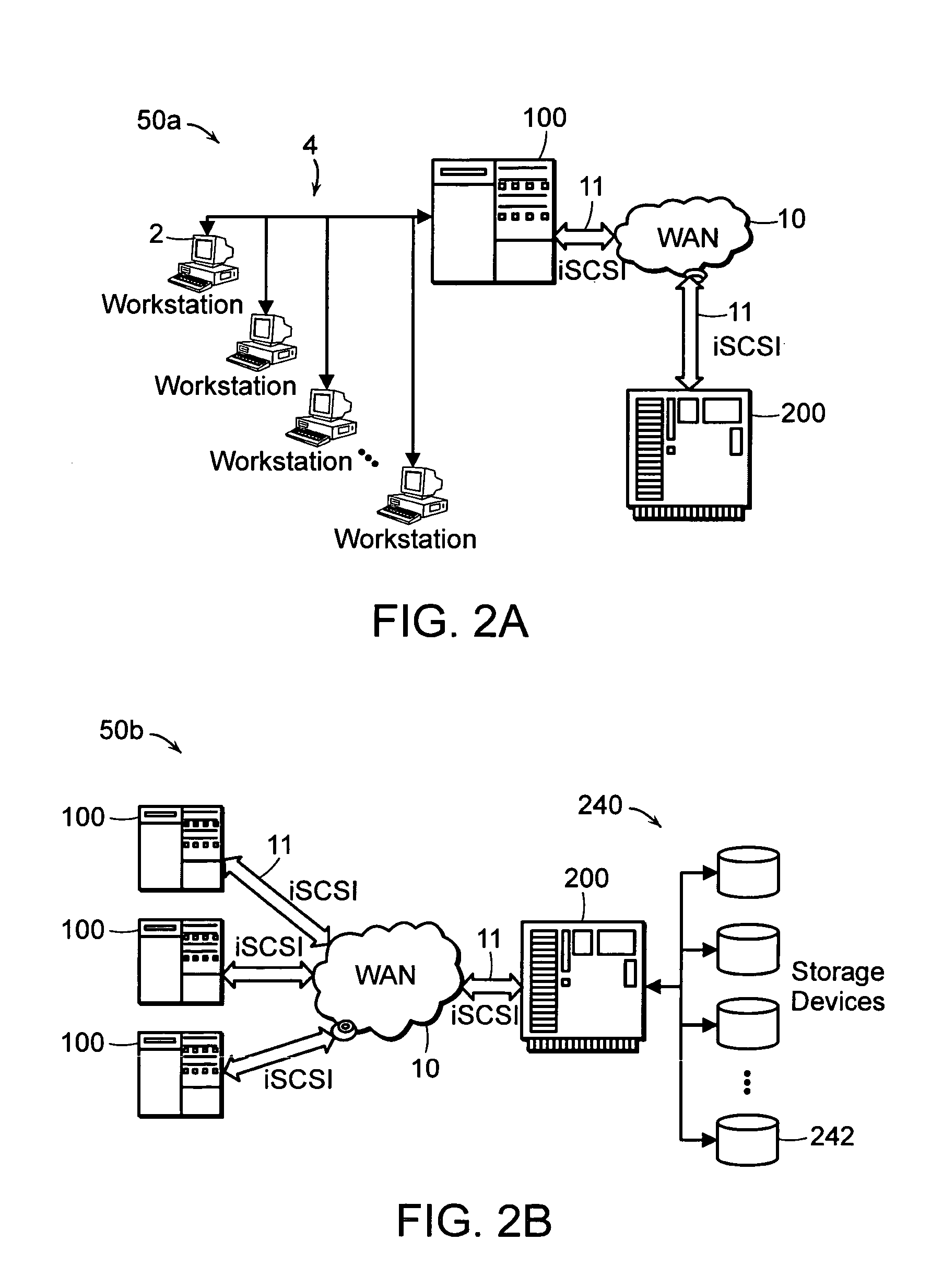Adaptive cache engine for storage area network including systems and methods related thereto
a cache engine and storage area network technology, applied in the field of data storage devices, systems and methods, can solve the problems of high cost of hardware/software installation and management of fc-san, and high cost of leased network connections with speeds of 155 mbps, etc., to achieve efficient and reliable operation, increase processing performance, and reduce cost
- Summary
- Abstract
- Description
- Claims
- Application Information
AI Technical Summary
Benefits of technology
Problems solved by technology
Method used
Image
Examples
example 1
[0144] Referring to FIGS. 8A, B there are shown graphical views of response time versus storage requests for a financial type of user when using the storage system / apparatus of the present invention (FIG. 8A) and when using a conventional iSCSI storage system (FIG. 8B). Also, referring to FIGS. 8C, D, there are shown graphical views of response time versus storage requests for another financial type of user when using the storage system / apparatus of the present invention (FIG. 8C) and when using a conventional iSCSI storage system (FIG. 8D). It can be seen from these graphical views that the response time for a storage device embodying the principals, methodology and devices of the present invention is consistently better than for a conventional storage system embodying iSCSI techniques.
[0145] Referring now also to FIGS. 9A, B there are shown graphical views that illustrate execution time at an application server for the two different financial types when using the storage system / a...
example 2
[0146] Referring now to FIGS. 10A, B there are shown illustrative views of a queuing model for the storage system / apparatus of the present invention (FIG. 10A) and for a conventional iSCSI storage system (FIG. 10B). Using these queuing models scalability analysis were performed to evaluate that scalability of these queuing models for differing communication speed capabilities for the WAN.
[0147] Referring now to FIGS. 11A, B there is shown a graphical view of a scalability analysis of throughput versus number of servers when using the storage system / apparatus of the present invention and when using a conventional iSCSI storage system when either is connected to a 256 Kbps WAN (FIG. 11A) and a graphical view of a scalability analysis of I / O response time versus number of servers when using the storage system / apparatus of the present invention and when using a conventional iSCSI storage system when either is connected to a 256 Kbps WAN (FIG. 11B). Comparing the curves 900, 910 corresp...
PUM
 Login to View More
Login to View More Abstract
Description
Claims
Application Information
 Login to View More
Login to View More - R&D
- Intellectual Property
- Life Sciences
- Materials
- Tech Scout
- Unparalleled Data Quality
- Higher Quality Content
- 60% Fewer Hallucinations
Browse by: Latest US Patents, China's latest patents, Technical Efficacy Thesaurus, Application Domain, Technology Topic, Popular Technical Reports.
© 2025 PatSnap. All rights reserved.Legal|Privacy policy|Modern Slavery Act Transparency Statement|Sitemap|About US| Contact US: help@patsnap.com



